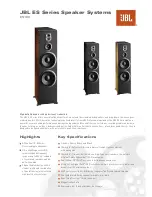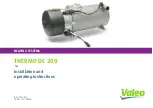
52
VIPER MIG 165
OPERATING MANUAL
20. Drive Roller Selection
The importance of smooth, consistent wire feeding during MIG welding cannot be emphasised enough. The smoother
the wire feed, the better the welding will be. Feed rollers or drive rollers are used to feed the wire mechanically along the
length of the welding gun.
Feed rollers are designed to be used for certain types of welding wire, and they have different types of grooves machined
in them to accommodate the different types of wire. The wire is held in the groove by the top roller of the wire drive unit
and is referred to as the pressure roller. Pressure is applied by a tension arm that can be adjusted to increase or decrease
the pressure as required. The type of wire will determine how much pressure can be applied and what type of drive roller
is best suited to obtain optimum wire feed.
20.1 Solid Hard Wire (V Groove)
Steel or stainless steel require a drive roller with a V shape groove for optimum grip and drive capability. Solid
wires can have more tension applied to the wire from the top pressure roller that holds the wire in the groove,
and the V shape groove is more suited for this. Solid wires are more forgiving to feed due to their higher cross-
sectional column strength. They are stiffer and don’t bend so easily.
20.2 Aluminium (U Groove)
Aluminium requires a U shape groove. Aluminium wire has a lot less column strength, can bend easily
and is, therefore, more difficult to feed. Soft wires can easily buckle at the wire feeder where the wire
is fed into inlet guide tube of the torch. The U-shaped roller offers more surface area grip and traction
to help feed the softer wire. Softer wires also require less tension from the top pressure roller to avoid
deforming the shape of the wire, too much tension will push the wire out of shape and cause it to catch in
the contact tip.
20.3 Flux Cored / Gasless Wire (Knurled/F Groove)
These wires are made up of a thin metal sheath that has fluxing, and metal compounds layered onto it
and then rolled into a cylinder to form the finished wire. The wire cannot take too much pressure from
the top roller as it can be crushed and deformed if too much pressure is applied. A Knurled/F groove
drive roller has been developed, and it has small serrations in the groove. The serrations grip the wire
and assist in driving it without too much pressure from the top roller. The downside to the knurled wire
feed roller on flux-cored wire is it will slowly eat away at the surface of the welding wire, and these small pieces will eventually
go down into the liner. This will cause clogging in the liner and added friction that will lead to welding wire feed problems. A U
groove wire can also be used for flux cored wire without the wire particles coming off the wire surface. However, it is considered
that the Knurled roller will give a more positive feed of flux cored wire without any deformation of the wire shape.
20.4 VIPER 165 Rollers
V GROOVE
U GROOVE
F(Knurled) GROOVE
Roller Diameter: 30/10/10
V Groove Roller (Steel Wire)
SKU
Description
XA-DRV30608
XA Drive Roll V Groove 0.6-0.8mm - 30/10/10
XA-DRV30809
XA Drive Roll V Groove 0.8-0.9mm - 30/10/10
Knurled/F Groove (Flux-Cored Wire)
SKU
Description
XA-DRK0809
XA Drive Roll Knurled 0.8-0.9mm - 30/10/10
XA-DRK0912
XA Drive Roll Knurled 0.9-1.2mm - 30/10/10
U Groove Roller (Aluminium Wire)
SKU
Description
XA-DRU30809
XA Drive Roll U Groove 0.8-0.9mm - 30/10/10
XA-DRU31012
XA Drive Roll U Groove 1.0-1.2mm - 30/10/10
10mm
10mm
30mm







































